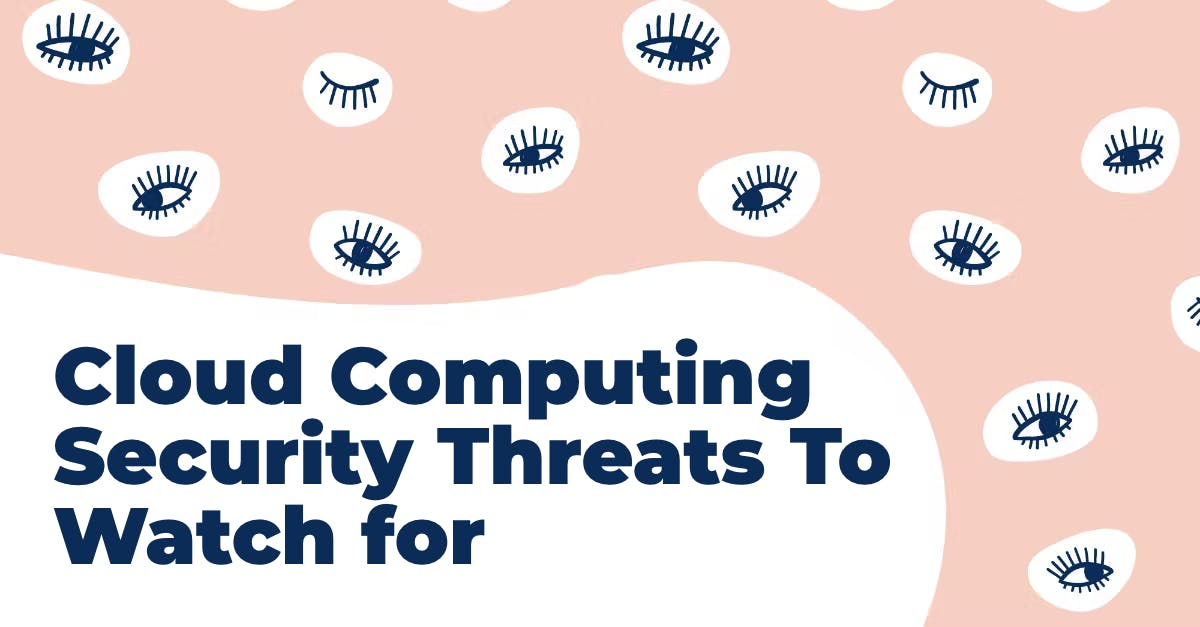Cloud computing provides users the convenience to spin up workloads without dealing with the overhead that comes with maintaining physical infrastructure. This, combined with the low cost, drives up adoption rates even further. With this growing adoption, what are the security risks associated with cloud computing? We break down the top cyber threats below.
1. Identity First Security
It is predicted that by 2023, 75% of security failures will result from inadequate management of identities, access, and privileges. Misused credentials are now the top technique used in breaches. Most attackers are steadily targeting company directory and the identity infrastructure with phenomenal success. Identity is a key lateral movement technique across air-gapped networks that accounts for the majority of breaches today.
You can consider integrating Identity Governance and Administration (IGA), PAM (Privileged Access Management) and Cloud Infrastructure Entitlement Management (CIEM) solutions for consistent management and governance of identities and entitlements and to enforce the Principle of least Privilege (PoLP) across all environments, as identity first security takes fresh urgency in the current distributed, primarily digital landscape.
2. Cloud Misconfiguration
Incorrect configurations of cloud infrastructure remains the top cause of cloud computing security breaches worldwide, seen from reported data breaches of the likes of Verizon and Adobe Creative Cloud. Some of the most common configuration problems found within cloud infrastructure include:
- Publicly accessible storage bucketsstorage buckets
- Insecure resource access controls
- Exposed credentials in public repositories
As the vast majority of cloud breaches stem from misconfiguration, consistent monitoring for cloud misconfigurations becomes paramount. Cloud Security Posture Management (CSPM)Cloud Security Posture Management (CSPM) software allows you to do just that. Consequently, the global CSPM market is projected to grow from USD4M in 2020 to USD9M by 2026, as reported by Reportlinker.com. In the 2021 Gartner security summit, it was also mentioned that CSPM is now a mandatory toolCSPM is now a mandatory tool for organizations in the cloud.
3. Denial of Service
Cloud environments, due to the need for Internet connectivity to access them, are especially vulnerable to Denial of Service (DoS) and Distributed Denial of Service (DDoS)Distributed Denial of Service (DDoS) attacks.
Attackers can flood an organization’s cloud network with a large amount of web traffic, thus rendering resources unavailable to both customers and employees/staff. The bigger the chunk of infrastructure residing in the cloud, the more lethal a DoS attack will be.
To mitigate the risk of DoS attacks:
- Restrict access to network ports, protocols, and services to minimize the attack surface
- Leverage load balancers and content delivery networks (CDNs) to limit single points of failure
- Have a baseline of normal traffic so you can spot anything abnormal
- Install a web application firewall (WAF) to protect against anyone exploiting known vulnerabilities
4. Insider Threats
As much as 43 percent of security breaches originate from within the organization. Insider attacks can be maliciousInsider attacks can be malicious (like in the case of disgruntled employees), or unintentional.
Proper training and awareness is the key to mitigating insider attacks. Adhere to the principle of least privilege when architecting your environment’s access controls to limit the damage employees can create and create a proper personnel offboarding protocol.
Most importantly, security in the cloudsecurity in the cloud is as much a people issue as it is a technical issue. Taking care of your employees will reduce the risks of rogue employees causing damage to your organization.
5. Reduced Infrastructure Visibility
The nature of using a third party provider for computing means you hand over partial control to the cloud service provider (CSP). In this case, your organization does not own the physical infrastructure, making it more challenging to get full visibility of your infrastructure and resources uses, especially without the right technical expertise.
The Cloud operates under a shared responsibility modelshared responsibility model between you and the cloud service provider (CSP). While this means the CSP handles management of the physical infrastructure, it is still your responsibility to ensure the data and application workloads in the cloud remain secure.
This lack of visibility is a symptom common in many convoluted cloud environments, making it ripe for data breaches and threats like the next on this list — unauthorized use of cloud workloads.
6. Unauthorized Use of Cloud Workloads
Most major CSPs operate on a self-service model. This makes it easier for users to provision and de-provision workloads on the fly depending on their needs.
On the flipside, this ease of use also brings forth Shadow IT, or IT resources users create and use without the IT team’s knowledge. Shadow IT comes with its own set of risks, including (but not limited to):
- Increased risk of data loss and leaks
- Unexpected costs
- Compliance violations
Make sure to adhere to the principle of least privilege and only authorize creation of workloads to users who need to do so as part of their job. Set up audit logging and alerting mechanisms so you can track all activities happening inside and easily flag out any unauthorized activities.
7. Insecure APIs
You can have watertight controls within your infrastructure, but insecure application APIs can punch holes in your environment’s defenses and create an entryway. Many APIs have their own security vulnerabilities that, when exploited, can put your cloud environment at risk.
To mitigate this threat, have your IT team verify every external application any team plans to use and be aware of any risks before implementation. Keep tabs on security updates and application patches.
8. Compliance and Regulation Issues
Lastly, organizations need to keep track of and comply with multiple regulations depending on their geographical operations and industry type. With new regulations appearing and older ones being updated as the landscape changes, it can be a challenge for organizations to keep up.
Continuous cloud complianceContinuous cloud compliance proves to be the main solution for regulatory woes. It means constantly monitoring your cloud compliance posture, as opposed to only working on it during audit season.
Performing the due diligence early on in the process mitigates the high costs that come with non-compliance.
Proactive, Holistic Defense
None of these threatsthreats are new, but the changing landscape and transition to the cloud require a different approach compared to the on-premise workloads of old.
Being proactive not only prevents larger, more costly issues from cropping up but also helps build your organization’s reputation and allows you to focus on the tasks that add value to your business.
It takes no more than 5 minutes for a basic scan of your cloud infrastructure with Horangi's CSPMHorangi's CSPM. If you are interested, sign up for a free trial of Horangi Warden herehere.




